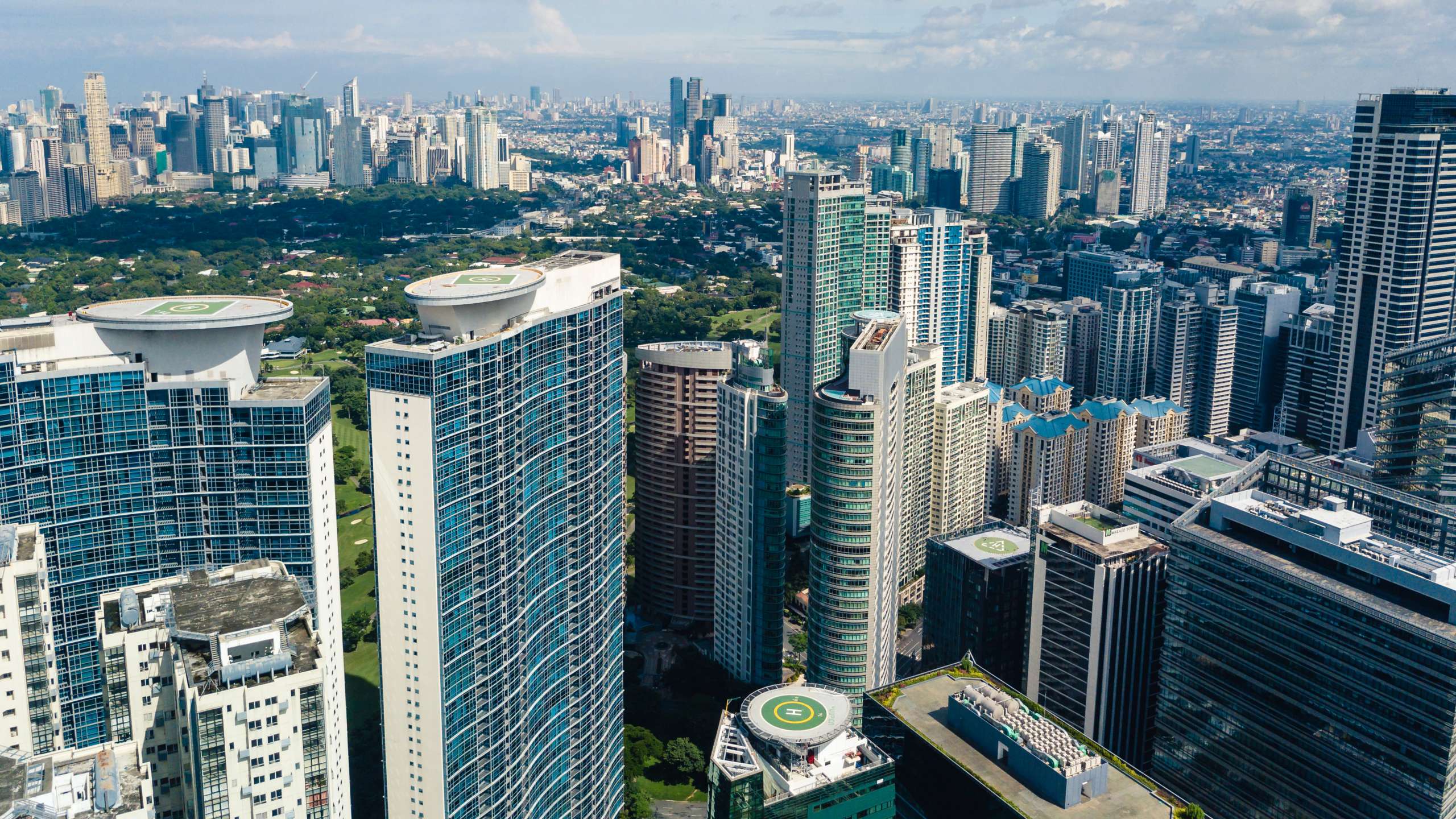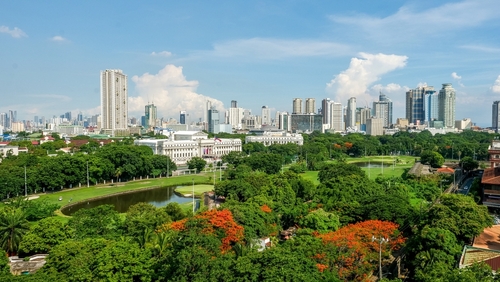Home Loan Calculator
Calculate and view your monthly payments on your house
Monthly Payment
₨
₨
₨
₨
₨
Send me the mortgage calculator result
Latest Listings

La Bella Boutique Hotel (Condotel)
Barangay, Tagaytay, Cavite
Starting from: ₨ 8,740,932

10 Acacia Place
10 21st Ave, Cubao, Quezon City, Metro Manila
Starting from: ₨ 14,568,221

My Enso Lofts
Brgy, Sgt. Esguerra Ave. and, Timog Ave, District 4, Quezon City, Metro Manila
Starting from: ₨ 21,852,331

Primehomes Capitol Hills
Zuzuarregui St, Matandang Balara, Quezon City, 1119 Metro Manila
Starting from: ₨ 17,481,865

Southkey Place
Crescent Dr, Alabang, Muntinlupa, Metro Manila
Starting from: ₨ 12,332,232

Casa de Sequoia
Diego Cera Ave, Las Pinas, Metro Manila
Starting from: ₨ 11,146,986

Callisto Tower
Theater Drive corner West Gala Drive, Circuit, Makati, Metro Manila
Starting from: ₨ 70,898,674

Aruga Resort and Residences by Rockwell
5097 Punta Engaño Rd, Lapu-Lapu City, 6015 Cebu
Starting from: ₨ 77,697,177
Learn
Tips and Guides
 Philippine Real Estate 2025: Resilient Growth and Emerging Opportunities Beyond Metro Manila
Philippine Real Estate 2025: Resilient Growth and Emerging Opportunities Beyond Metro Manila
In the second half of 2025, the Philippine real estate market is showing renewed momentum, spurred by infrastructure developments, hybrid work preferences, and the growing influence of Overseas Filipino Workers (OFWs) as property investors. Metro Manila remains pivotal, but provincial cities like Cebu, Davao, and Iloilo are becoming vibrant growth centers, driven by the government's "Build Better More" infrastructure initiative. Meanwhile, vertical living is evolving with post-pandemic preferences—buyers now prioritize condos offering home-office flexibility, open-air access, and smart amenities. OFWs are increasingly investing in income-generating properties, and the digitalization of property transactions is transforming the market experience, led by tech-forward firms like IQI Philippines. Looking ahead, demand remains robust for mid-market and affordable housing, especially in emerging BPO and industrial zones. Townhouses, house-and-lot offerings, and sustainable developments are attracting millennials and returning Filipinos. Meanwhile, the commercial sector benefits from e-commerce-driven growth in logistics and warehousing. Despite a generally optimistic outlook, challenges linger: high interest rates, elevated construction costs, and political or economic uncertainties are prompting some buyers to remain cautious. Nonetheless, the broader trend suggests a resilient and adaptive market, poised for sustained growth.Download the full newsletter for expert analysis and market updates from other countries.Download
Continue Reading
 Clark & Nuvali Lead New Housing Trends in Philippines
Clark & Nuvali Lead New Housing Trends in Philippines
Written by Emmanuel Andrew Venturina, Head of IQI PhilippinesBeyond the Metro: Clark and Nuvali Lead the Shift in Philippine Homebuyer TrendsThe Philippine real estate landscape is experiencing a significant shift as homebuyers increasingly look beyond Metro Manila for house and lot investments. Driven by the rise of remote work, affordability, infrastructure expansion, and lifestyle preferences, emerging areas like Clark Global City in Pampanga and Nuvali in Laguna are gaining popularity. Young families, overseas Filipinos, and professionals are drawn to these locations for their greener environments, larger living spaces, and lower density—while still maintaining connectivity to Metro Manila’s economic centers.Clark Global City is evolving into a key northern business and residential hub, bolstered by major infrastructure developments and investor-friendly policies. Meanwhile, Nuvali offers a model for sustainable living, with eco-friendly features, established amenities, and strong developer backing. These developments signal a long-term trend toward township-style communities that prioritize quality of life. As urban land in Metro Manila becomes increasingly scarce and costly, destinations like Clark and Nuvali are set to become focal points for future housing demand and real estate growth.Click for more info!Download
Continue Reading
 Philippine Real Estate Remains Resilient in 2025
Philippine Real Estate Remains Resilient in 2025
Written by Emmanuel Andrew Venturina, Country Head of PhilippinesPHILIPPINE REAL ESTATE MARKET DEMONSTRATES RESILIENCE AMID GLOBALMANILA, Philippines — Despite global economic uncertainties, the Philippine real estate market continues to exhibit remarkable resilience in 2025. Driven by robust domestic demand, strategic infrastructure developments, and adaptive industry practices, the sector remains a pivotal component of the nation's economic stability.Economic Headwinds and Market AdaptationThe 2025 global economy faces inflation, rate fluctuations, and geopolitical tensions. These challenges impact all sectors, including real estate. However, the Philippine market has responded well. Colliers Philippines reports that office space net take-up is expected to rebound, driven by traditional and outsourcing firms. Residential Sector: Shifting Preferences and Steady DemandResidential real estate remains key to growth. While Metro Manila's vacancy rate may hit 25% by end-2025, developers are turning to suburban areas to meet buyers’ needs for more space and affordability. In Caloocan, 10.7 billion has been allocated for urban development, targeting affordable housing and reshaping the city’s landscape.Office Market: Embracing Flexibility and InnovationThe office sector is adapting amid remote work trends. In Q1 2025, demand rose 7% year-on-year, largely due to the IT-BPM sector. Companies seek flexible, sustainable spaces, prompting developers to support hybrid work with innovative solutions.Retail and Hospitality: Signs of RecoveryRetail and hospitality are gradually recovering. Cushman & Wakefield Philippines notes improved mall occupancy, spurred by increased consumer spending. Developers are revitalizing retail spaces to align with shifting consumer behavior and rising foot traffic.Industrial and Logistics: Capitalizing on E-commerce GrowthThe segment continues strong, fueled by e-commerce and infrastructure progress. Regions like North and Central Luzon and CALABARZON are seeing more investment in logistics hubs. The "Build Better More" program boosts connectivity through expressways and airport upgrades, enabling new industrial opportunities.Investment Climate: Renewed Confidence and OpportunitiesRecent legislative reforms—such as the amended Foreign Investment Act and expanded REITs—have enhanced investor confidence. REITs offer access to income-generating assets and new capital-raising channels. Tourism and industrial real estate are set to benefit from rising foreign investments.Sustainability and Technological IntegrationSustainability and tech integration are reshaping the industry. Developers now emphasize energy-efficient design, green certifications, and digital infrastructure to meet growing demands from buyers and institutional investors.Outlook for 2025 and BeyondThe market’s adaptability underpins its potential for sustained growth. Demographic strength, urbanization, tech adoption, and infrastructure investment are key drivers. Experts highlight the importance of innovation and consumer insight, stating, “Real estate in the Philippines is no longer just about location—it's about lifestyle, resilience, and long-term value creation.”ConclusionIn 2025, Philippine real estate stands out for its resilience and adaptability. With solid fundamentals and growing investor interest, it continues to offer both opportunity and stability in a challenging global environment.Click here now for more info!Download
Continue Reading
 How Developers Are Tackling Metro Manila’s Condo Oversupply with Flexible Payment and Rent-to-Own Options?
How Developers Are Tackling Metro Manila’s Condo Oversupply with Flexible Payment and Rent-to-Own Options?
This article is contributed by Emmanuel Andrew Venturina, Country Head of IQI PhilippinesDevelopers Collectively Addressing the Condo Oversupply In the last quarter of 2024, Metro Manila face a significant oversupply of condominiums due to a frenzy of developments that have been impacted by pandemic and low take up. As demand fluctuates, real estate developers are strategically implementing flexible payment terms and rent-to-own schemes to better align with consumer needs and stimulate sales. These initiatives not only provide potential buyers with more accessible paths to homeownership but also enable developers to mitigate the impacts of oversupply. Flexible Payment Terms Flexible payment terms are designed to ease the financial burden on potential buyers by offering various options for making payments. Developers are increasingly allowing buyers to choose from multiple financing arrangements, which may include longer installment periods, lower down payments, and graduated payment structures. By doing so, they cater to a diverse range of financial situations, making it easier for young professionals, first-time buyers, and even investors to consider purchasing a unit. For example, some developers may offer a down payment as low as 5% with the remaining balance spread out over several years. This approach not only helps individuals save up but also allows them to manage cash flow better while still enjoying the benefits of ownership in a rising real estate market. Additionally, these flexible terms can provide security and peace of mind, knowing that their investment is not tied to prohibitively high initial costs. Rent-to-Own Schemes The rent-to-own scheme is another innovation gaining traction in response to the oversupply issue. This model lets potential buyers rent a condominium unit with the option to purchase it after a specified period. A portion of the rent paid during the rental term is usually credited toward the eventual purchase price. This scheme serves two functions: it addresses the immediate need for housing and caters to those who may not yet be financially ready to buy. Rent-to-own agreements provide flexibility and lower risk for buyers who may be uncertain about committing fully to a purchase. They can live in the property, observe the neighborhood, and decide if it fits their lifestyle before making a long-term investment. For developers, this approach can lead to a more stable occupancy rate, as units are not left vacant while waiting for buyers. This can also contribute to healthier cash flow, enabling developers to reinvest and sustain their projects. In the past, very few developers are embracing the rent-to-own scheme, now, almost all of the developers are introducing competitive rent-to-own programs; some with 10-year lease to own program with minimal initial downpatment to move-in; some with as low as 5% downpayment to enable clients to use the property. Market Impact and Future Outlook By adopting these strategies, developers are not only addressing the oversupply of condominiums in Metro Manila but also enhancing consumer confidence in the real estate market. As more individuals are enticed by flexible payment options and the potential of rent-to-own arrangements, the market can recover more swiftly from the effects of oversupply. Looking ahead, it is likely that market dynamics will continue to evolve, with developers regularly assessing consumer needs and innovations in financing. By prioritizing flexible payment solutions and adaptable ownership models, developers can help sustain a healthier real estate environment, benefitting both buyers and developers alike in the long run. As Metro Manila navigates its current real estate landscape, these payment strategies will play a crucial role in balancing supply and demand, ultimately fostering growth and stability in the condominium market. Want deeper insights into global property trends? Download our comprehensive market value report to explore opportunities beyond PhilippinesDownload
Continue Reading





































